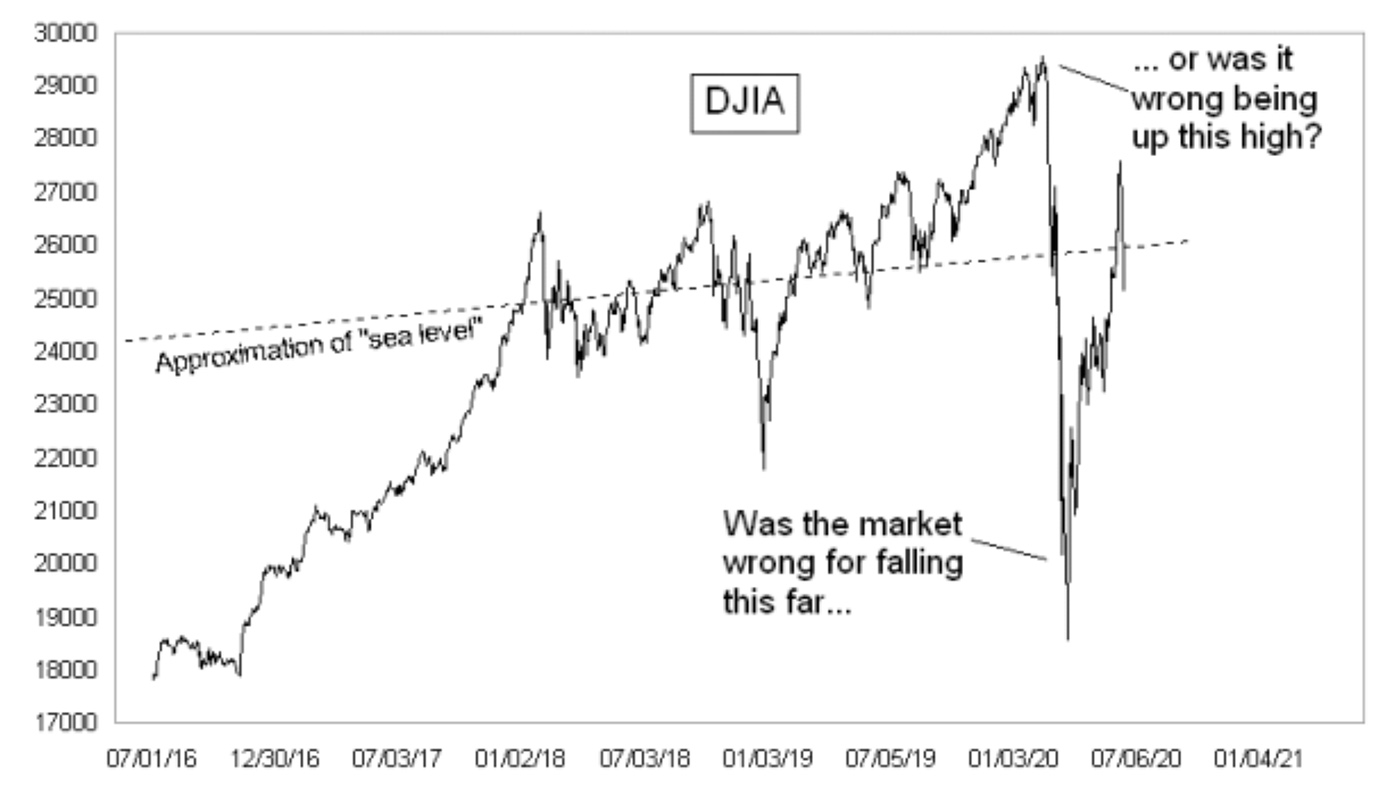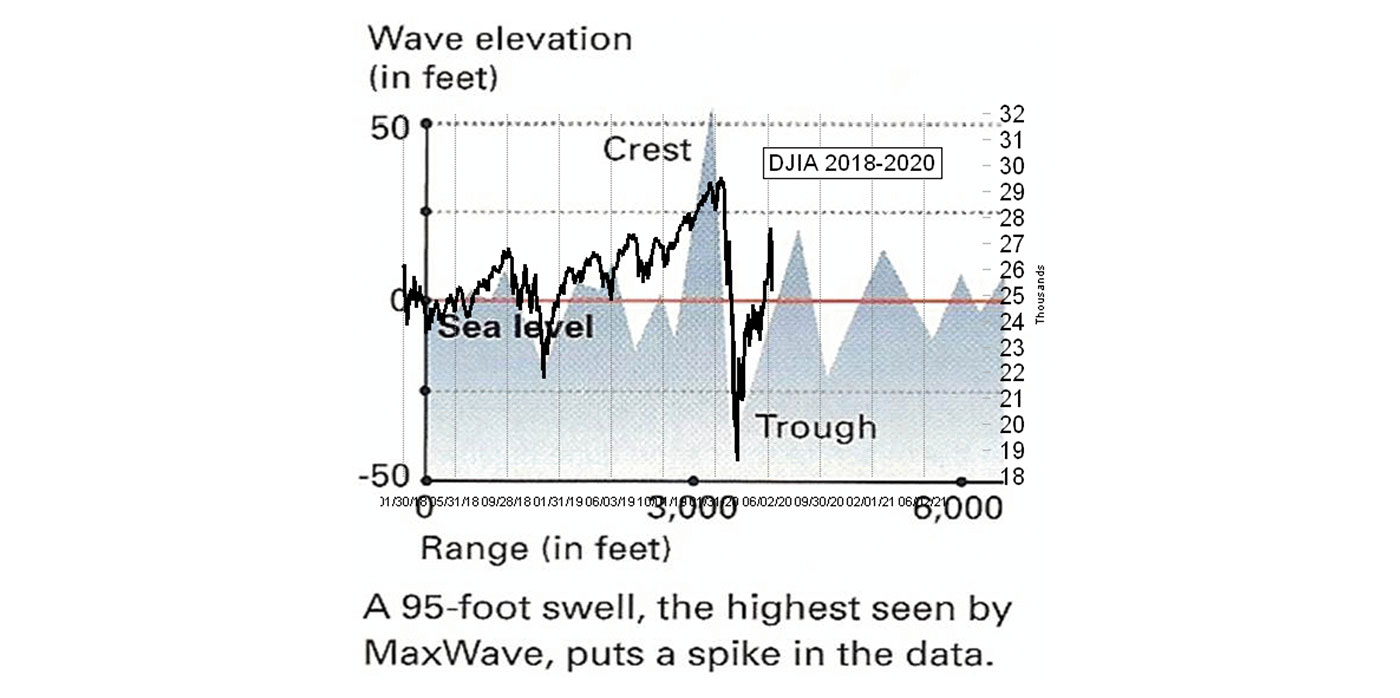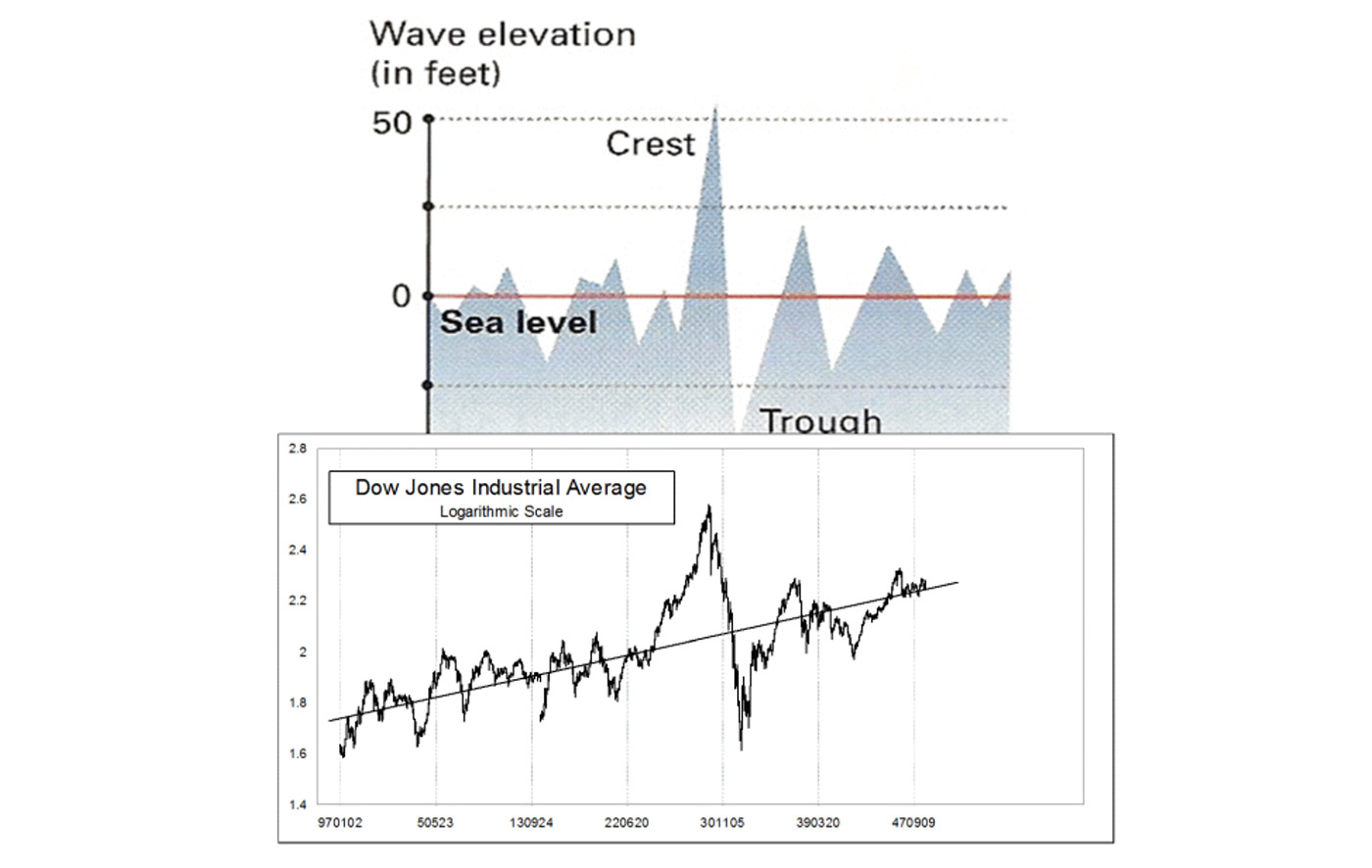

Back on March 19, I wrote the article “Stock Market Showing Another Example of ‘Rogue Wave’ Behavior.” Figure 1 (from June 11) is an updated version of the chart from that article. The only change is that three more months’ of price data for the Dow Jones Industrial Average (DJIA) have been added.

Source: ©2020, McClellan Financial Publications, www.mcoscillator.com
In an oceanic “rogue wave,” the huge wave “borrows” energy from the adjacent waves, dwarfing the size of the surrounding chop. One important feature of oceanic rogue waves is that the height of the crest above sea level is matched by the depth of the adjacent trough below sea level, making them even more dangerous to ships.
The principle operates in the financial markets as well, although we have to apply an expansive interpretation of what “sea level” means in a price chart. For the article three months ago, I added a rough approximation of a regression line drawn through the data leading up to the February 2020 top. The rebound off the March 23, 2020, bottom has taken price back up above that median line, and the sharp sell-off on June 11 took prices back below it again. It appears that the market has returned to “sea level,” with a lot of help from the Fed running QE4.
Also featured in that March 2020 article was an overlay comparison of the current chart of the DJIA with an actual plot of an oceanic rogue wave, as captured by a project known as MaxWave. Figure 2 provides an update of that comparison.

Source: ©2020, McClellan Financial Publications, www.mcoscillator.com
The alignment of the price structures leading up to the February 2020 top was not perfect, and the alignment of structures following the bottom has also not been perfect. However, similarities do exist.
I had first made a comparison of prices to that MaxWave pattern years ago after noticing the similarity of its pattern to the 1929 top and 1932 bottom. A little bit of chart magic and stretching got the chart structures aligned in the comparison in Figure 3.

Source: ©2020, McClellan Financial Publications, www.mcoscillator.com
In this case, sea level for the stock market is an upward-sloped line on this logarithmic-scaled chart. It is not perfect, but it works well enough.
The point about oceanic rogue waves is that they pass (eventually), and the chop returns to normal size. That same point operates for rogue waves in financial markets. The difference is that, in the ocean, sea level remains mostly constant. In the financial market, any assignment of a momentary sea level has to be viewed as temporary. Once the price returns to it after the rogue wave, a new trend can develop with some new definition of sea level for prices to oscillate above and below.
The opinions expressed in this article are those of the author and do not necessarily represent the views of Proactive Advisor Magazine. These opinions are presented for educational purposes only.
This is an edited version of an article that first appeared at McClellan Financial Publications on June 11, 2020.
 Tom McClellan is the editor of The McClellan Market Report newsletter and its companion, Daily Edition. He started that publication in 1995 with his father Sherman McClellan, the co-creator of the McClellan Oscillator, and Tom still has the privilege of working with his father. Tom is a 1982 graduate of West Point, and served 11 years as an Army helicopter pilot before moving to his current career. Tom was named by Timer Digest as the #1 Long-Term Stock Market Timer for both 2011 and 2012. mcoscillator.com
Tom McClellan is the editor of The McClellan Market Report newsletter and its companion, Daily Edition. He started that publication in 1995 with his father Sherman McClellan, the co-creator of the McClellan Oscillator, and Tom still has the privilege of working with his father. Tom is a 1982 graduate of West Point, and served 11 years as an Army helicopter pilot before moving to his current career. Tom was named by Timer Digest as the #1 Long-Term Stock Market Timer for both 2011 and 2012. mcoscillator.com
